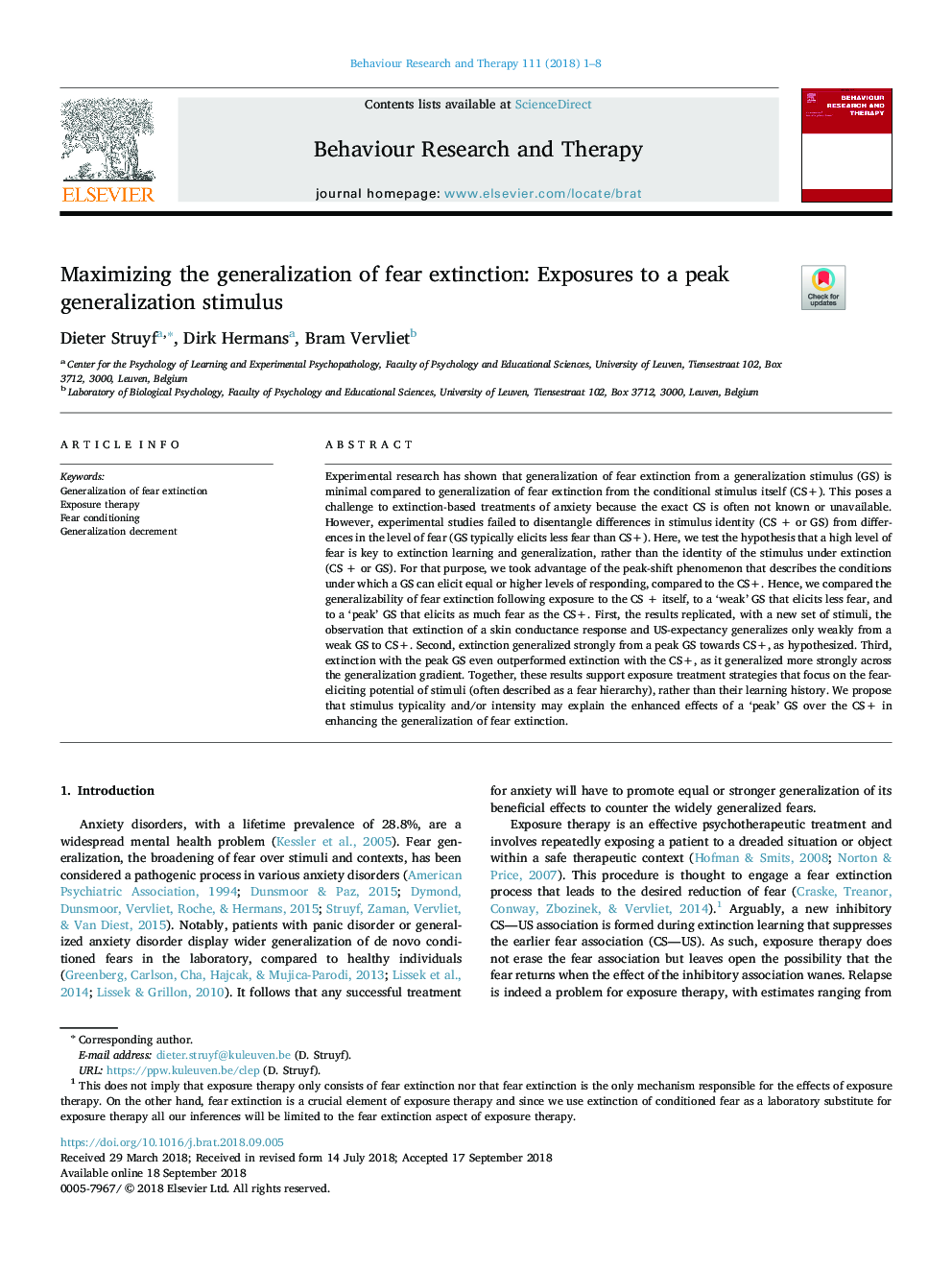| Article ID | Journal | Published Year | Pages | File Type |
|---|---|---|---|---|
| 10226661 | Behaviour Research and Therapy | 2018 | 8 Pages |
Abstract
Experimental research has shown that generalization of fear extinction from a generalization stimulus (GS) is minimal compared to generalization of fear extinction from the conditional stimulus itself (CS+). This poses a challenge to extinction-based treatments of anxiety because the exact CS is often not known or unavailable. However, experimental studies failed to disentangle differences in stimulus identity (CSÂ +Â or GS) from differences in the level of fear (GS typically elicits less fear than CS+). Here, we test the hypothesis that a high level of fear is key to extinction learning and generalization, rather than the identity of the stimulus under extinction (CSÂ +Â or GS). For that purpose, we took advantage of the peak-shift phenomenon that describes the conditions under which a GS can elicit equal or higher levels of responding, compared to the CS+. Hence, we compared the generalizability of fear extinction following exposure to the CSÂ +Â itself, to a 'weak' GS that elicits less fear, and to a 'peak' GS that elicits as much fear as the CS+. First, the results replicated, with a new set of stimuli, the observation that extinction of a skin conductance response and US-expectancy generalizes only weakly from a weak GS to CS+. Second, extinction generalized strongly from a peak GS towards CS+, as hypothesized. Third, extinction with the peak GS even outperformed extinction with the CS+, as it generalized more strongly across the generalization gradient. Together, these results support exposure treatment strategies that focus on the fear-eliciting potential of stimuli (often described as a fear hierarchy), rather than their learning history. We propose that stimulus typicality and/or intensity may explain the enhanced effects of a 'peak' GS over the CS+ in enhancing the generalization of fear extinction.
Related Topics
Health Sciences
Medicine and Dentistry
Psychiatry and Mental Health
Authors
Dieter Struyf, Dirk Hermans, Bram Vervliet,
